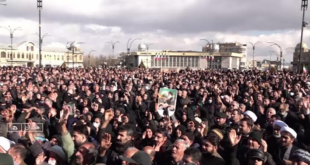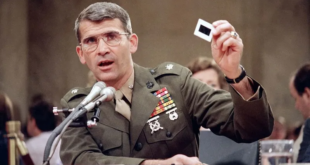U.S. President Donald Trump Friday declared a national emergency, clearing the way for more federal aid to stream to states and cities to combat the coronavirus pandemic.
“We will defeat this threat,” Trump said during a nationally televised news conference from the White House Rose Garden.
Trump, who has declared five previous national emergencies, had come under increasing pressure in recent days, especially from opposition Democrats, to take such action as governors and mayors across the United States declared states of emergency, ordering the cancellation of public gatherings and closures of schools.
The action by the president will free up tens of billions of dollars in funding in the Disaster Relief Fund. It allows a state to request the federal government pay for 75% of costs for such expenses as emergency workers, medical supplies, and tests and vaccinations to respond to the virus, which some epidemiologists warn could soon overwhelm the country’s health care system.
“States are to set up emergency operation centers immediately, and all hospitals are to activate their emergency operation plans,” Trump said.
Oil reserve
He also announced the purchase of large quantities of oil for the national strategic petroleum reserve.
“We’re going to fill it right up to the top,” he said.
Trump also said he was ordering that interest payments on federal student loans be waived until further notice.
Asked about discussions between Democrats and Republicans on legislation to help Americans withstand the economic shock of the virus, Trump said, “We don’t think the Democrats are giving enough.”
Prior to Trump’s speech, House Speaker Nancy Pelosi said the Democratic Party-controlled chamber on Friday would pass the Families First Coronavirus Response Act.
“The three most important parts of this bill are testing, testing, testing,” Pelosi said, explaining the bill will also include two weeks of paid sick leave for those affected, improved unemployment insurance and a bolstered lunch program for schoolchildren.
A few hours after Trump’s news conference, Pelosi announced an agreement had been reached with the White House.
Cases of the coronavirus have now been reported in 47 of the 50 U.S. states.
Only about 1% of the 136,000 cases of the COVID-19 disease are in the United States, but public health officials are bracing for a much larger number of patients. Some officials say the number may actually be much larger because of limited testing conducted, so far, for the coronavirus infection.
The largest U.S. cluster of deaths from the coronavirus is in the state of Washington, where 37 deaths have been reported.
Travel restrictions
In a nationally televised addressed Wednesday night, Trump restricted travel for 30 days, effective Friday at midnight, from most European countries, with the notable exception of Britain.
He confirmed that the federal government was partnering with the private sector to set up drive-through testing sites for the coronavirus amid frustration expressed by people who suspect they may be infected but cannot get tested.
The plan was discussed Friday during a meeting between White House officials and executives of the retail, pharmaceutical and technology sectors.
The spread of the virus has unsettled global markets, with U.S. prices for securities dropping more than 20% on average from recent highs amid negative investor sentiment.
The Dow Jones industrial average surged late Friday, finishing with a gain of nearly 2,000 points or 9.4%, recovering most of Thursday’s losses.
“These short-term sacrifices will produce long-term gains,” Trump said Friday, acknowledging the spread of the coronavirus “could get worse. The next eight weeks are critical.”
Trump ‘most likely’ to be tested
During the Rose Garden news conference, with Vice President Mike Pence and members of the White House’s coronavirus task force at the podium, Trump was asked repeatedly about his coming in close contact at his Florida resort at Mar-a-Lago last weekend with a Brazilian official now known to have COVID-19.
The president initially responded, “I don’t have any of the symptoms” and thus there was no need for him to be tested.
Later, when asked again about the encounter, Trump stated: “I didn’t say I wasn’t going to be tested.” He said he “most likely” would have the nasal swab done “fairly soon.”
On Monday, the leaders of the Group of Seven leading industrialized countries are to hold a videoconference to discuss the pandemic.
“We will coordinate research efforts on a vaccine and treatments, and work on an economic and financial response,” French President Emmanuel Macron announced via Twitter.
The epicenter of the pandemic, which originated in China, is now Europe, World Health Organization Director Dr. Tedros Adhanom Ghebreyesus said.
 Eurasia Press & News
Eurasia Press & News



